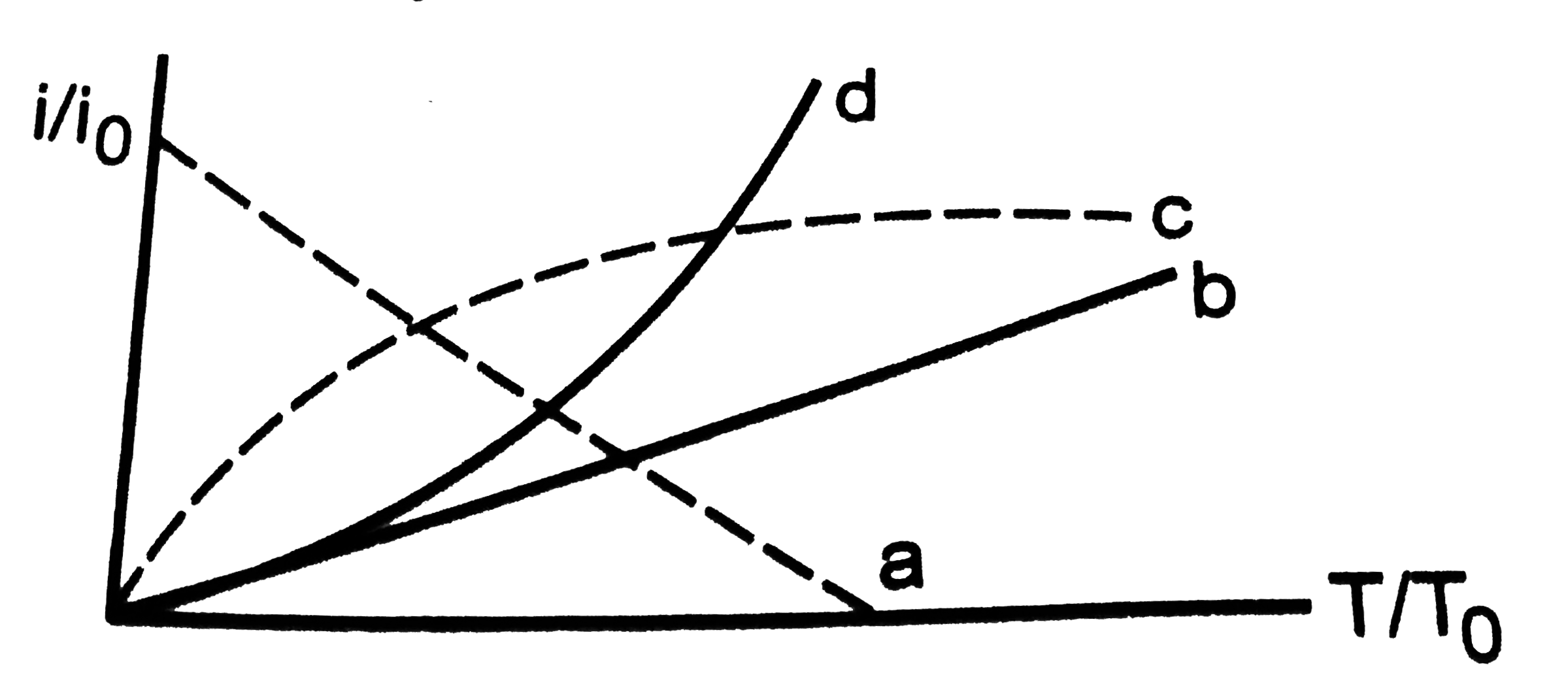Thermionic emissions are related to
conduction
convection
radiation
none of these
The correct Answer is:B
Step-by-Step Solution:
1. Understanding Thermionic Emission:
- Thermionic emission refers to the phenomenon where electrons are emitted from a material (usually a metal) when it is heated to a high temperature. This occurs because the thermal energy provided to the electrons allows them to overcome the work function of the material.
2. Example of Thermionic Emission:
- A common example of thermionic emission is the filament in an electric bulb. When the filament is heated, it reaches a temperature high enough to emit electrons.
3. Identifying the Processes of Heat Transfer:
- The question provides four options: conduction, convection, radiation, and none of these. We need to identify which of these processes is related to thermionic emission.
- Conduction is the transfer of heat through a material without the movement of the material itself.
- Convection is the transfer of heat through the movement of fluids (liquids or gases).
- Radiation is the transfer of heat in the form of electromagnetic waves.
4. Analyzing the Relationship:
- In thermionic emission, the electrons are emitted due to the thermal energy supplied to the metal. This process does not involve the transfer of heat through conduction or radiation in the traditional sense.
- Instead, it is more closely related to convection because the emitted electrons can be thought of as a movement of charge carriers (similar to how heat is transferred in convection).
5. Conclusion:
- Based on the analysis, thermionic emissions are related to convection, as it involves the movement of electrons (charge carriers) due to thermal energy.
Final Answer:
Thermionic emissions are related to convection.
---
- Thermionic emission refers to the phenomenon where electrons are emitted from a material (usually a metal) when it is heated to a high temperature. This occurs because the thermal energy provided to the electrons allows them to overcome the work function of the material.
- A common example of thermionic emission is the filament in an electric bulb. When the filament is heated, it reaches a temperature high enough to emit electrons.
- The question provides four options: conduction, convection, radiation, and none of these. We need to identify which of these processes is related to thermionic emission.
- Conduction is the transfer of heat through a material without the movement of the material itself.
- Convection is the transfer of heat through the movement of fluids (liquids or gases).
- Radiation is the transfer of heat in the form of electromagnetic waves.
- In thermionic emission, the electrons are emitted due to the thermal energy supplied to the metal. This process does not involve the transfer of heat through conduction or radiation in the traditional sense.
- Instead, it is more closely related to convection because the emitted electrons can be thought of as a movement of charge carriers (similar to how heat is transferred in convection).
- Based on the analysis, thermionic emissions are related to convection, as it involves the movement of electrons (charge carriers) due to thermal energy.
Thermionic emissions are related to convection.
Topper's Solved these Questions
- BOOK - NCERT FINGERTPS ENGLISHCHAPTER - DUAL NATURE OF RADIATION AND MATTER EXERCISE - PHOTOELECTRIC EFFECT2videos
DUAL NATURE OF RADIATION AND MATTER
- BOOK - NCERT FINGERTPS ENGLISHCHAPTER - DUAL NATURE OF RADIATION AND MATTER EXERCISE - EXPERIMENTAL STUDY OF PHOTOELECTRIC EFFECT11videos
DUAL NATURE OF RADIATION AND MATTER
- BOOK - NCERT FINGERTPS ENGLISHCHAPTER - DUAL NATURE OF RADIATION AND MATTER EXERCISE - Assertion And Reason15videos
DUAL NATURE OF RADIATION AND MATTER
- BOOK - NCERT FINGERTPS ENGLISHCHAPTER - CURRENT ELECTRICITYEXERCISE - Assertion And Reason15videos
CURRENT ELECTRICITY
- BOOK - NCERT FINGERTPS ENGLISHCHAPTER - ELECTRIC CHARGES AND FIELDSEXERCISE - Assertion And Reason15videos
ELECTRIC CHARGES AND FIELDS
Similar Questions
Knowledge Check
- Question 1 - Select One
The phenomenon of photoelectric emission was discovered in 1887 by
AAlbert EinsteinBHeinrich HertzCWilhelm HallwachsDPhilipp Lenard
Why does thermionic emission not take place in nonconductors?
View SolutionExplain thermionic emission, field emission and photoelectric emission.
View SolutionPhotoelectric Emission
View SolutionAssertion : Photoelectric effect supports the quantum nature of light.
Reason : Photoelectric emission is instantaneous.View SolutionLet i0 be the thermionic current from a metal surface when the absolute temperature of the surface is T0. The temperature is slowly increased and the thermionic current is measured as a function of temperature. Which of the following plots may represent the variation in (ii0) against (TT0) ?
 View Solution
View SolutionIn photoelectric emission, the energy of the emitted electron is
View SolutionWhich of the following transitions are not allowed in the normal electronic emission spectrum of an atom?
View Solution


_CHE_E06_290.png) are related as
are related as